RansomUserLocker ransomware (Virus Removal Instructions) - Quick Decryption Solution
RansomUserLocker virus Removal Guide
What is RansomUserLocker ransomware?
RansomUserLocker targets Korean computer users
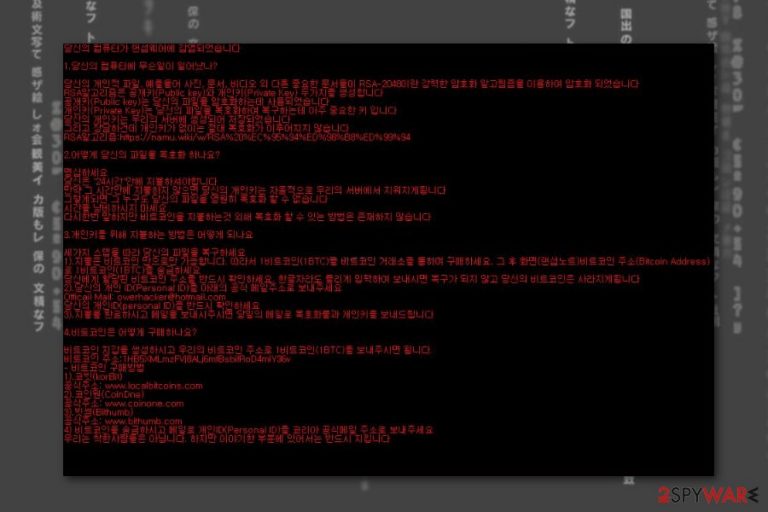
RansomUserLocker is a file-encrypting virus that is a version of Korean HiddenTear ransomware. It uses .RansomUserLocker file extension to make data on the targeted computer inaccessible. Once it finishes encryption procedure, it drops a Read_Me.txt file and delivers a lock screen message with data recovery possibilities.
The RansomUserLocker virus emerged in January 2018, as well as a couple of other ransomware infections that aims at Korean computer users. According to the primary research data, malware is created by the same authors as recently discovered Talk ransomware (also knowns as Korean Talk virus). Additionally, it resembles VenusLocker ransomware which was active in Korea in 2017.
The RansomUserLocker ransomware uses a combination of AES And RSA cryptography to damage files on the computer. According to the information, provided in the ransom note, victims have 72 hours to pay 1 Bitcoin to get their files back. After making a transaction (not recommended), victims are asked to send their ID number provided in the ransom note to owerhacker@hotmail.com.
However, instead of paying the ransom users are advised to remove RansomUserLocker from their computers. There are no guarantees that crooks will send you a decryption software and a needed key. Ransomware is illegal money-making business. Thus, once hackers receive their money, their job is done.
Hence, to avoid a huge amount of money loss, you should obtain a reputable malware removal tool, such as FortectIntego, and run a full system scan with it. Automatic RansomUserLocker removal ensures that all malware-related entries are wiped out from the system safely.
Ransomware-type cyber threats are capable of injecting malicious codes into legit system processes, installing numerous files and components, as well hiding them deep in the system. For this reason, it’s not recommended trying to delete RansomUserLocker manually.
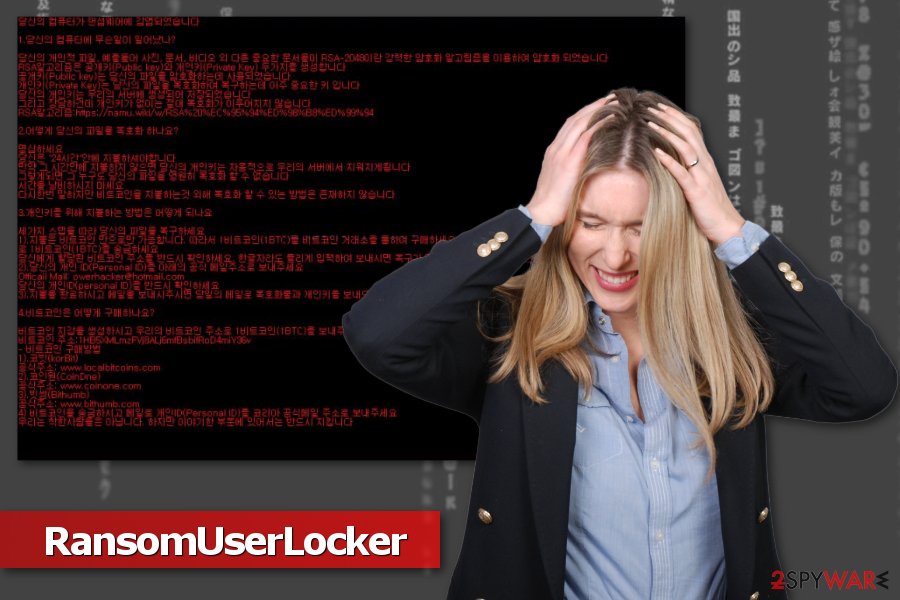
The way ransomware spreads and how to avoid it
Malware payload RansomUserLocker.exe is being spread via malicious spam emails, bogus downloads, fake updates, cracked software, malicious ads and other tricky methods. However, users can protect themselves from the cyber attack.
Unfortunately, it’s not enough to install an antivirus program and feel 100% protected. Some cyber threats are capable of bypassing cyber security. Thus, you have to be careful with your actions online:
- Do not open spam emails and unknown attachments. It’s the main ransomware distribution method.[1] Thus, if you did not expect to receive an invoice, statement or other “important” document, do not open attachment. The security team from bedynet.ru[2] also report that buttons and links in the emails might be malicious too.
- Do not click on eye-catchy or aggressive ads[3] because they might include malicious content or redirect to infected sites.
- Do not install software updates from pop-ups or third-party download sites. Legit updates are installed automatically, or they are available on the official download sites.
- Avoid using third-party software download sources, such as torrents or P2P networks.
Additionally, you should keep your programs and operating system up-to-date. Outdated software or unpatched system might have vulnerabilities and flaws. Thus malware can take advantage of them an attack the device.
Getting rid of RansomUserLocker virus
We have already told in the beginning that RansomUserLocker removal requires using reputable anti-malware software. We suggest using one of these tools: FortectIntego , SpyHunter 5Combo Cleaner or Malwarebytes. Though, you can choose your preferred reliable security software.
However, sometimes malware can block antivirus installation or system scan. In this case, you have to reboot the system to Safe Mode with Networking to remove RansomUserLocker entirely. The instructions below will show how to deal with such obstacles.
Getting rid of RansomUserLocker virus. Follow these steps
Manual removal using Safe Mode
To activate automatic RansomUserLocker ransomware removal, follow these steps:
Important! →
Manual removal guide might be too complicated for regular computer users. It requires advanced IT knowledge to be performed correctly (if vital system files are removed or damaged, it might result in full Windows compromise), and it also might take hours to complete. Therefore, we highly advise using the automatic method provided above instead.
Step 1. Access Safe Mode with Networking
Manual malware removal should be best performed in the Safe Mode environment.
Windows 7 / Vista / XP
- Click Start > Shutdown > Restart > OK.
- When your computer becomes active, start pressing F8 button (if that does not work, try F2, F12, Del, etc. – it all depends on your motherboard model) multiple times until you see the Advanced Boot Options window.
- Select Safe Mode with Networking from the list.
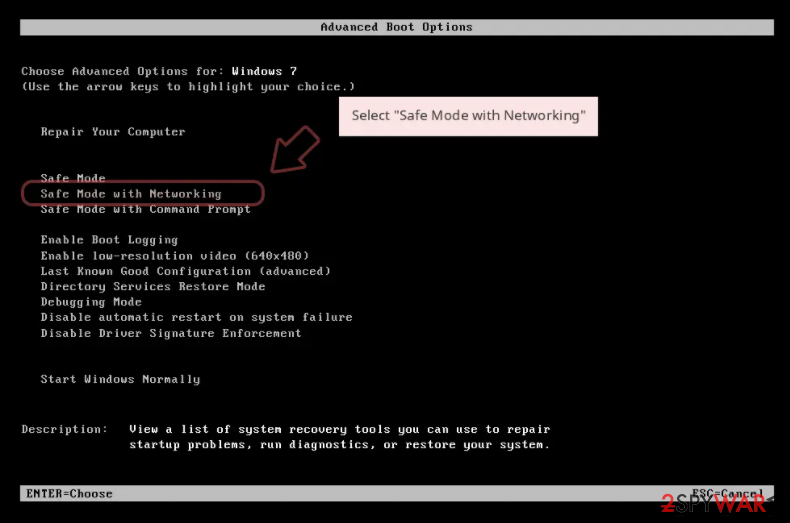
Windows 10 / Windows 8
- Right-click on Start button and select Settings.
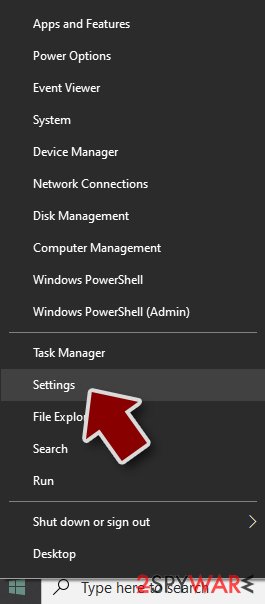
- Scroll down to pick Update & Security.
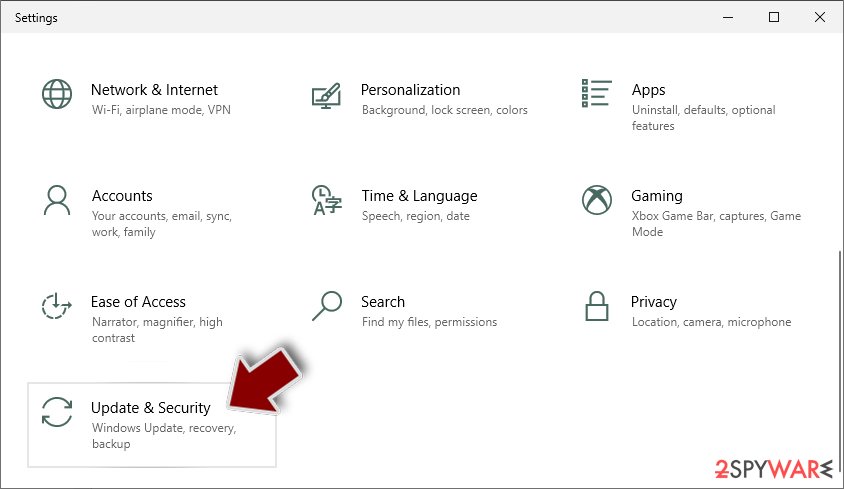
- On the left side of the window, pick Recovery.
- Now scroll down to find Advanced Startup section.
- Click Restart now.
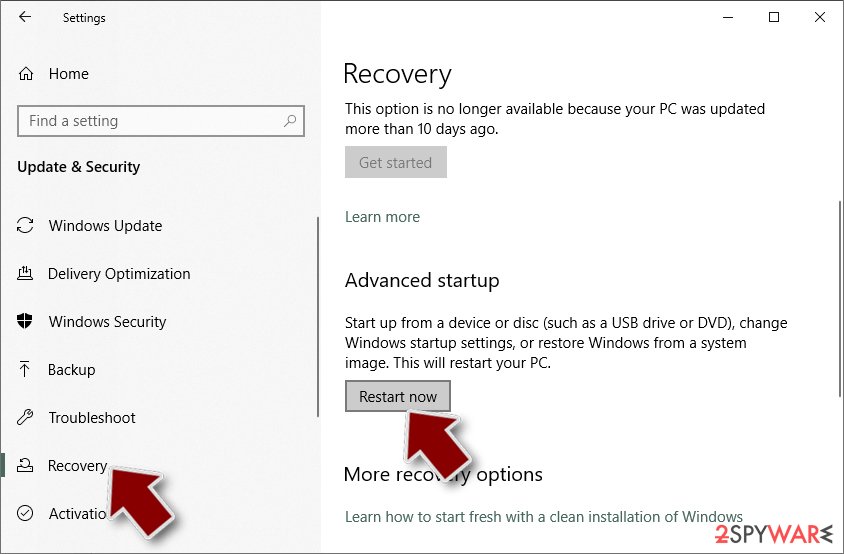
- Select Troubleshoot.
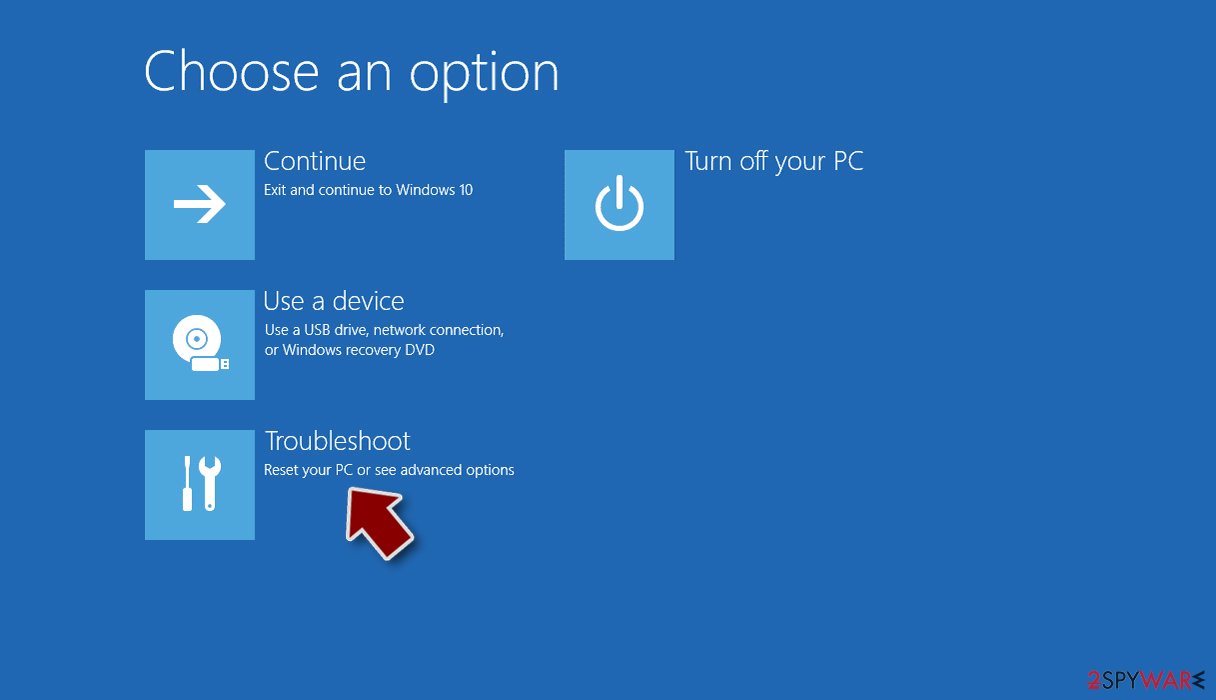
- Go to Advanced options.
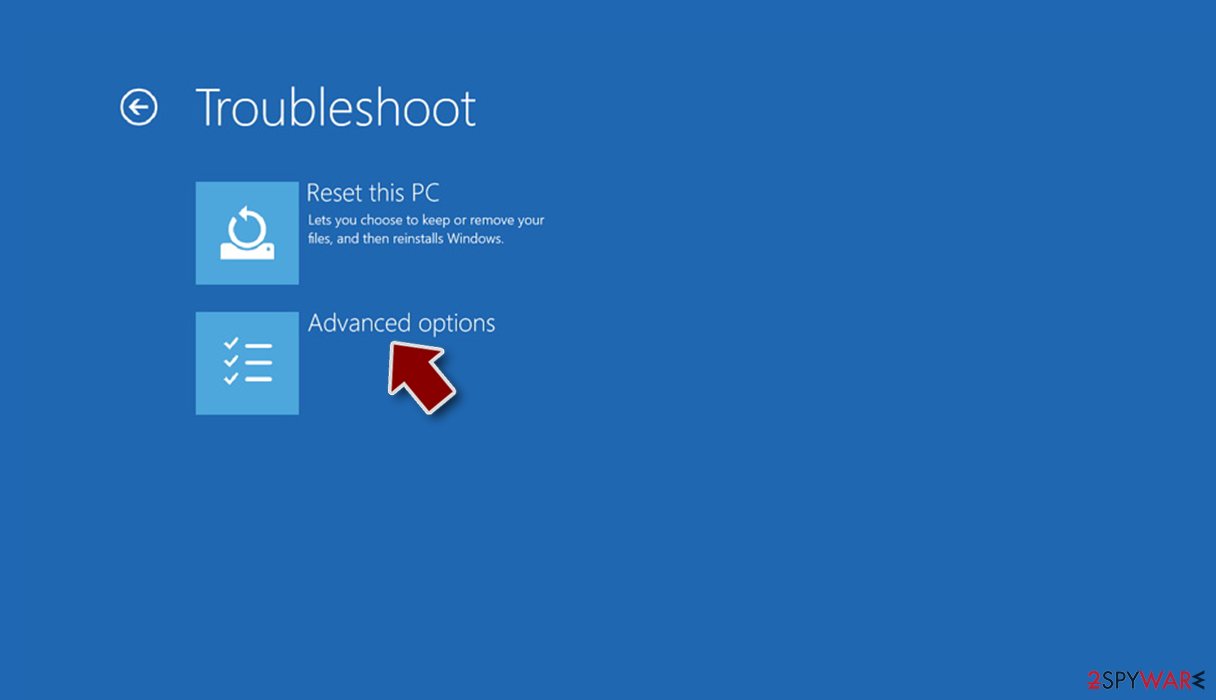
- Select Startup Settings.
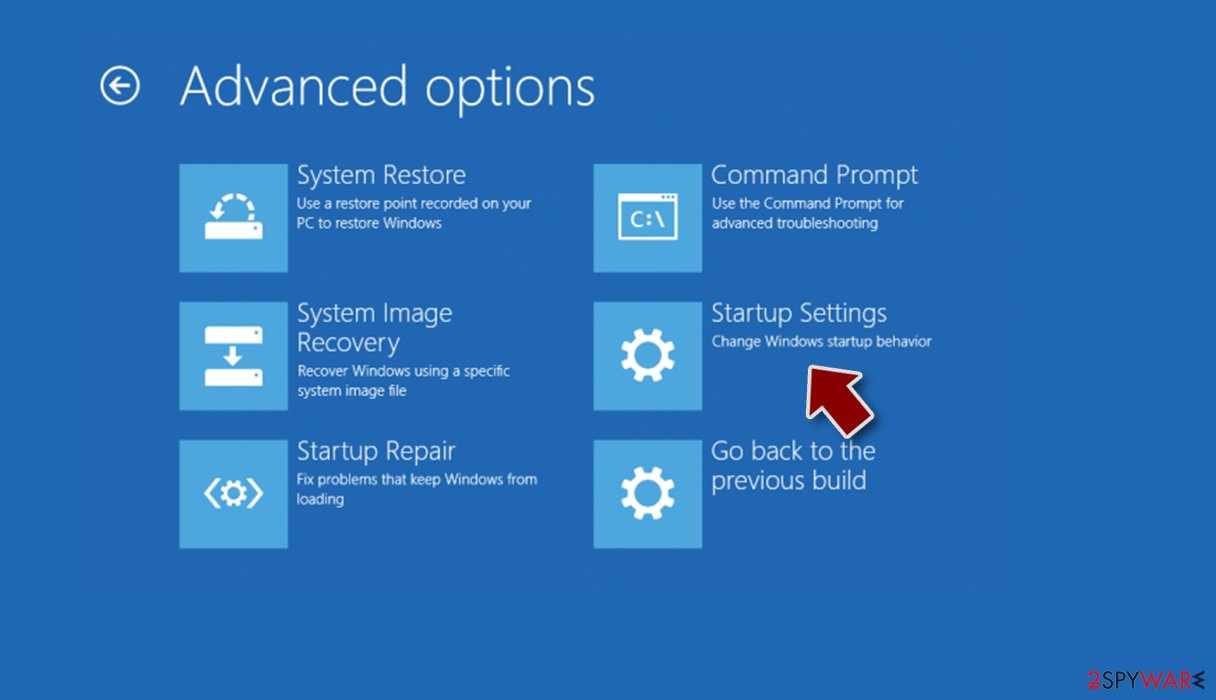
- Press Restart.
- Now press 5 or click 5) Enable Safe Mode with Networking.
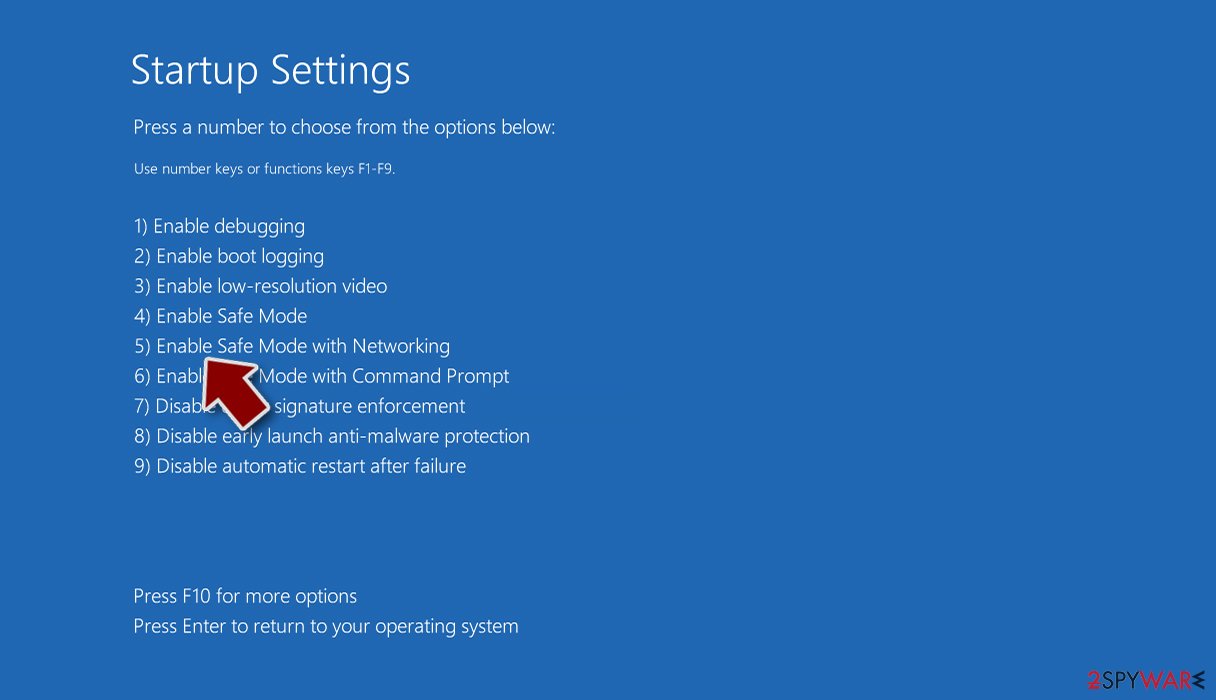
Step 2. Shut down suspicious processes
Windows Task Manager is a useful tool that shows all the processes running in the background. If malware is running a process, you need to shut it down:
- Press Ctrl + Shift + Esc on your keyboard to open Windows Task Manager.
- Click on More details.
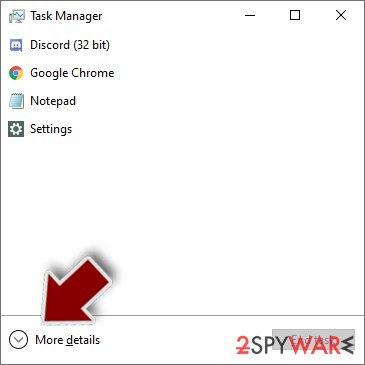
- Scroll down to Background processes section, and look for anything suspicious.
- Right-click and select Open file location.
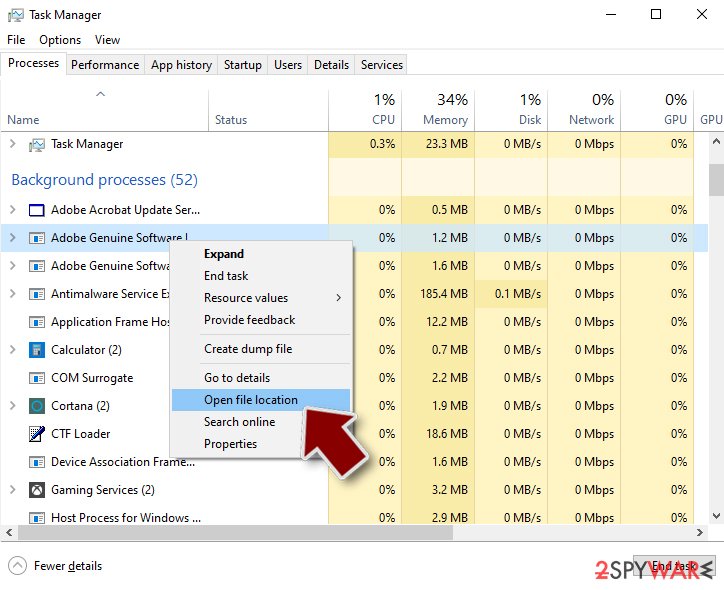
- Go back to the process, right-click and pick End Task.
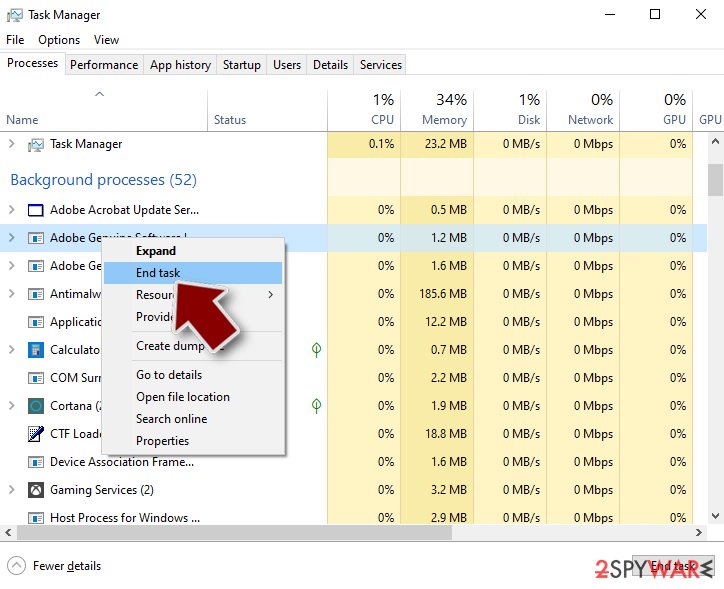
- Delete the contents of the malicious folder.
Step 3. Check program Startup
- Press Ctrl + Shift + Esc on your keyboard to open Windows Task Manager.
- Go to Startup tab.
- Right-click on the suspicious program and pick Disable.
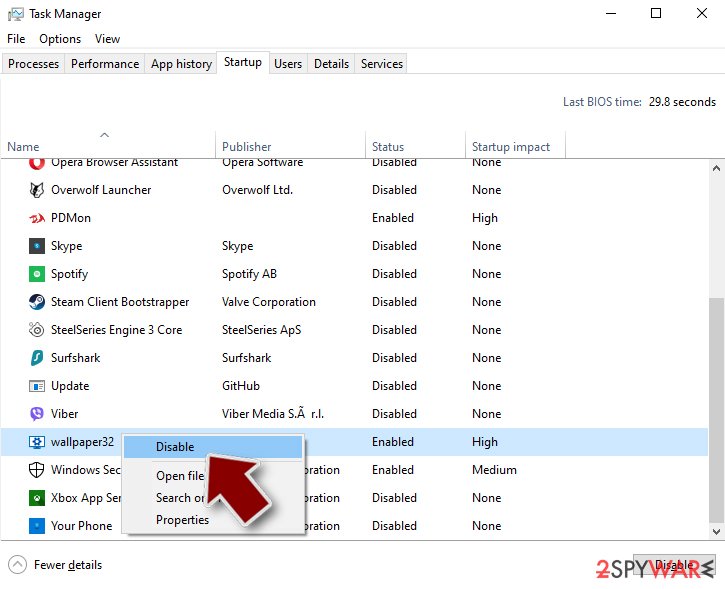
Step 4. Delete virus files
Malware-related files can be found in various places within your computer. Here are instructions that could help you find them:
- Type in Disk Cleanup in Windows search and press Enter.
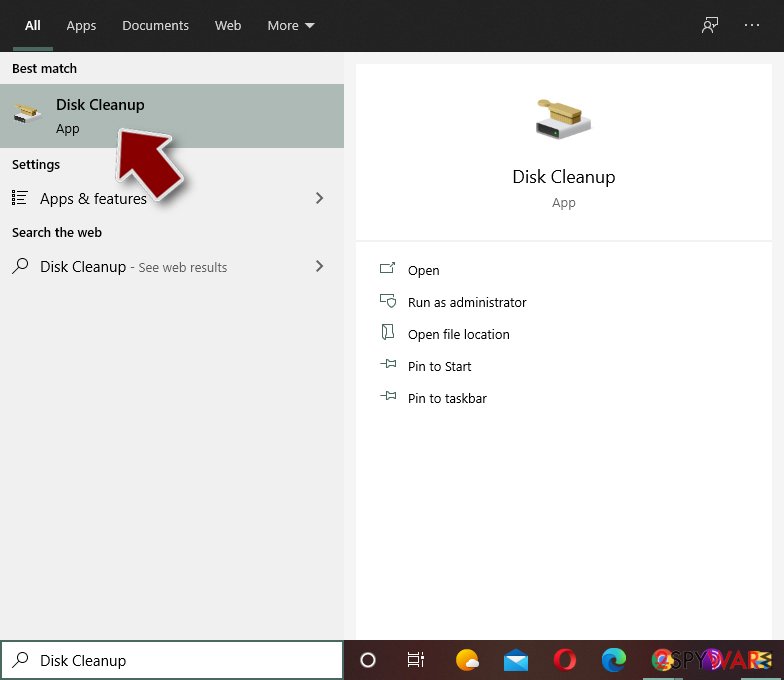
- Select the drive you want to clean (C: is your main drive by default and is likely to be the one that has malicious files in).
- Scroll through the Files to delete list and select the following:
Temporary Internet Files
Downloads
Recycle Bin
Temporary files - Pick Clean up system files.
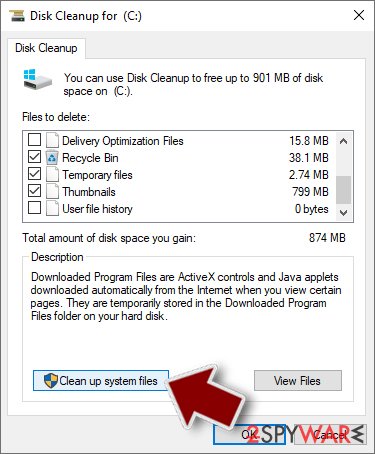
- You can also look for other malicious files hidden in the following folders (type these entries in Windows Search and press Enter):
%AppData%
%LocalAppData%
%ProgramData%
%WinDir%
After you are finished, reboot the PC in normal mode.
Remove RansomUserLocker using System Restore
This method helps to disable the virus and remove it with security program too:
-
Step 1: Reboot your computer to Safe Mode with Command Prompt
Windows 7 / Vista / XP- Click Start → Shutdown → Restart → OK.
- When your computer becomes active, start pressing F8 multiple times until you see the Advanced Boot Options window.
-
Select Command Prompt from the list

Windows 10 / Windows 8- Press the Power button at the Windows login screen. Now press and hold Shift, which is on your keyboard, and click Restart..
- Now select Troubleshoot → Advanced options → Startup Settings and finally press Restart.
-
Once your computer becomes active, select Enable Safe Mode with Command Prompt in Startup Settings window.

-
Step 2: Restore your system files and settings
-
Once the Command Prompt window shows up, enter cd restore and click Enter.

-
Now type rstrui.exe and press Enter again..

-
When a new window shows up, click Next and select your restore point that is prior the infiltration of RansomUserLocker. After doing that, click Next.


-
Now click Yes to start system restore.

-
Once the Command Prompt window shows up, enter cd restore and click Enter.
Bonus: Recover your data
Guide which is presented above is supposed to help you remove RansomUserLocker from your computer. To recover your encrypted files, we recommend using a detailed guide prepared by 2-spyware.com security experts.If your files are encrypted by RansomUserLocker, you can use several methods to restore them:
Data Recovery Pro might help to restore files with .RansomUserLocker extension
Originally, this program allows recovering corrupted or deleted files. However, in some cases, it is helpful after the ransomware attack.
- Download Data Recovery Pro;
- Follow the steps of Data Recovery Setup and install the program on your computer;
- Launch it and scan your computer for files encrypted by RansomUserLocker ransomware;
- Restore them.
Try Windows Previous Versions feature
This Windows OS feature allows traveling back in computer's time and accessing previous versions of the encrypted files. Though, System Restore had to be abled before the cyber attack.
- Find an encrypted file you need to restore and right-click on it;
- Select “Properties” and go to “Previous versions” tab;
- Here, check each of available copies of the file in “Folder versions”. You should select the version you want to recover and click “Restore”.
Try ShadowExplorer
If ransomware did not delete Shadow Volume Copies of the targeted files, you can take advantage of this tool:
- Download Shadow Explorer (http://shadowexplorer.com/);
- Follow a Shadow Explorer Setup Wizard and install this application on your computer;
- Launch the program and go through the drop down menu on the top left corner to select the disk of your encrypted data. Check what folders are there;
- Right-click on the folder you want to restore and select “Export”. You can also select where you want it to be stored.
RansomUserLocker decryptor is not available yet.
Finally, you should always think about the protection of crypto-ransomwares. In order to protect your computer from RansomUserLocker and other ransomwares, use a reputable anti-spyware, such as FortectIntego, SpyHunter 5Combo Cleaner or Malwarebytes
How to prevent from getting ransomware
Do not let government spy on you
The government has many issues in regards to tracking users' data and spying on citizens, so you should take this into consideration and learn more about shady information gathering practices. Avoid any unwanted government tracking or spying by going totally anonymous on the internet.
You can choose a different location when you go online and access any material you want without particular content restrictions. You can easily enjoy internet connection without any risks of being hacked by using Private Internet Access VPN.
Control the information that can be accessed by government any other unwanted party and surf online without being spied on. Even if you are not involved in illegal activities or trust your selection of services, platforms, be suspicious for your own security and take precautionary measures by using the VPN service.
Backup files for the later use, in case of the malware attack
Computer users can suffer from data losses due to cyber infections or their own faulty doings. Ransomware can encrypt and hold files hostage, while unforeseen power cuts might cause a loss of important documents. If you have proper up-to-date backups, you can easily recover after such an incident and get back to work. It is also equally important to update backups on a regular basis so that the newest information remains intact – you can set this process to be performed automatically.
When you have the previous version of every important document or project you can avoid frustration and breakdowns. It comes in handy when malware strikes out of nowhere. Use Data Recovery Pro for the data restoration process.
- ^ Spam, BEC, Ransomware: The Continuing Abuse of Email by Old and New Threats. Trend Micro. Enterprise data security and cyber security solutions for businesses.
- ^ Bedynet. Bedynet. Russian cyber security and malware news.
- ^ Danny Palmer. This malvertising campaign infected PCs with ransomware without users even clicking a link. ZDNet. Breaking news, analysis, and research keeps business technology professionals in touch with the latest IT trends, issues and events.







